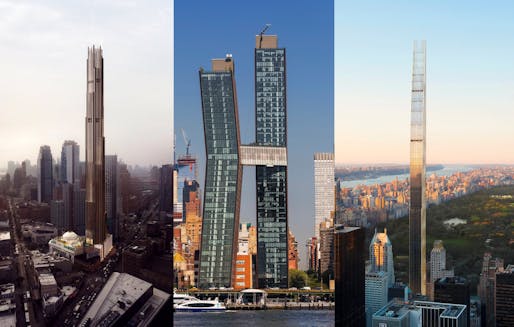Setting up tall just isn’t essentially better for the natural environment, in accordance to new analysis | News
Vertical residing may perhaps not be the most environmentally welcoming way of minimizing greenhouse gas emissions in the created atmosphere, in accordance to a new research by scientists from the University of Colorado, Edinburgh Napier University, and the University of Cambridge. The research, printed in the journal npj City Sustainability, suggests that very low-rise, significant-density towns are additional environmentally helpful than their superior-rise, higher-density counterparts, however each are nonetheless far more sustainable than minimal-rise, very low-density sprawling suburbs.
The scientists arrived at their conclusion by way of an analysis of an city environment’s everyday living cycle GHG emissions (LCGEs), which include things like the two embodied and operational emissions. By feeding 5,000 city ecosystem simulations into an algorithm, with different peak and densities, researchers concluded that taller urban environments appreciably boost LCGEs (+154%), though very low-density urban environments considerably enhance land use (+142%).
The group established that dense environments of somewhere around 6 to 10 tales in top offer the most environmentally pleasant balance, emitting somewhere around 365 tons of carbon dioxide for every human being considerably less than substantial-density higher-rise solutions. By like greenhouse emissions made for the duration of construction, this kind of as the production and transportation of components, the researchers decided that the improved land essential to construct 10-story structures is offset by the financial savings in supplies needed to build tall buildings, which usually have to have disproportionately huge foundations and structural aid.

A essential locating by the group is that, throughout all configurations of density and top, the LCGE improves as tallness raises, impartial of the amount of money of land essential to home the population. In contrast, the density of properties has small affect on LCGE that means that for all situations, very low and superior-density typologies resulted in equivalent LCGE success, irrespective of top. The findings propose that low-increase, large-density cities these types of as Paris, with predominately 5-6 tale properties, supply a far more environmentally-pleasant product for city progress than large-rise, substantial-density cities these kinds of as New York Metropolis or Hong Kong.
“We’ve constantly been looking at this issue from a creating point of view,” says Francesco Pomponi, the study’s lead writer and a professor at Edinburgh Napier College. Talking to Rapid Business, Pomponi notes that “if you glance at the constructing perspective and you review the footprint, of study course a tall creating is greater. The higher-rise constructing residences more individuals. But when you commence searching at the even bigger photo, you understand you are unable to place two higher-increase buildings as close as you can two minimal-rise properties. To create tall, you require heavier structures, chunkier foundations and also, for a large amount of very good reasons like privateness, ventilation, and daylighting, large-rise buildings need to be even further apart.”

The researchers see their findings as an important aspect in the structure of long term urban environments in Africa and China, which are envisioned to undergo immediate urbanization throughout this century. In developing their results, the crew hopes to involve other interdisciplinary factors to guidebook city arranging, these as occupant ease and comfort, the city warmth island result, competing land use, carbon sequestration of eco-friendly areas, urban guidelines, useful resource intake, and how city environments have an affect on criminal offense.
“Each creating should really not be equivalent to the next with a extremely mounted and approved height,” Pomponi explained to Quick Company. “It’s a lot more about acquiring an upper threshold that, unless of course you’ve acquired a actually, truly very good rationale, it ought to not be exceeded. This will be certain that about time we get a diverse-crafted environment that does not induce the environmental prices of constructing tall.”








